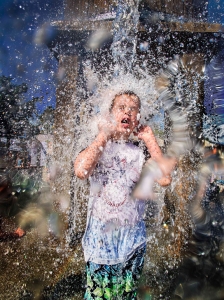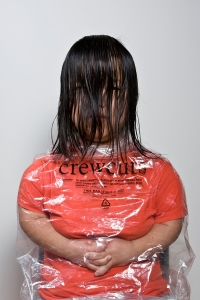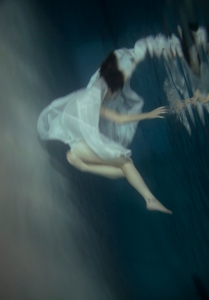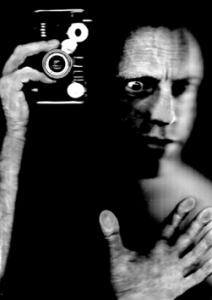Past Exhibition
Altered Images
Bruce Hall
Laura Swanson
Rahshida Linendoll-Sawyer
Kurt Weston
Gus Cummins
Ilsun Maeng
Gwynneth VanLaven
Matej Peljhan
September 2013
Bruce Hall (US) photographs in order to see. Vision devices such as cameras, lenses, magnifiers, and computer screens assist him in constructing his world. Hall's Autism in Reflection series reflects both his sons' uninhibited joy of water and the visual chaos and exuberance of refraction and reflection. Ilsun Maeng (Korea/UK) speculates about what we see and how we see it. In her work A Cold Stare #5 Maeng uses the effect of inversed photography to transform an image to a nocturnal scene. Finally, Kurt Weston's (US) piece, The Vision Machine, portrays the artist's metaphysical journey through eternal blackness. Weston's photographs and video art challenge preconceived notions of vision loss and create a new context in which to view blindness in the visual arts.
Photographer Matej Peljhan's (Slovenia) poignant series of photographs called Le Petit Prince, takes as its model a young friend who has muscular dystrophy, and who is positioned in tableaus showing all the physical things he dreams of doing. According to Peljhan, who lost an eye and an arm in an accident as a child, Le Petit Prince holds a mirror in his hands in which we can all recognize ourselves.
Laura Swanson (US) and Gwynneth VanLaven (US) share an interest in the world's reactions to otherness. Swanson, a Little Person, uses dark humour and empathy in staged self-portraits like Haircut, to explore how difference is visually articulated, objectified and understood. For VanLaven, the physical consequences of a car accident led her to reflect on attitudes about disability, not only on the part of the culture, but also on the person experiencing it. Her playful photograph Pity Party, Cake invites the viewer to join the space where fear cannot dismiss a person or a feeling, and fragility and resilience exist together.
Rahshia Linendoll-Sawyer's (US/Thailand) dreamy, amorphous figure-work, as seen in Neutral Effect, mirrors her explorations of the known and the unknown, and how we deal with experiences (like multiple sclerosis) in the absence of signifiers. Gus Cummins (UK), an activist in the realm of epilepsy and the arts, examines his condition through his experiences with medical experts, brain imaging and social reactions. His work Post Ictal is from a hospital recording, where he is speaking with a neurologist while in a state of partial consciousness following a seizure.
All these artists assert that it is in sharing the experience of difference and provoking dialogue through art that biases and fears may be diffused. Altered Images presents a narrative of our vulnerabilities and fragilities, as a touchstone for all human beings.




